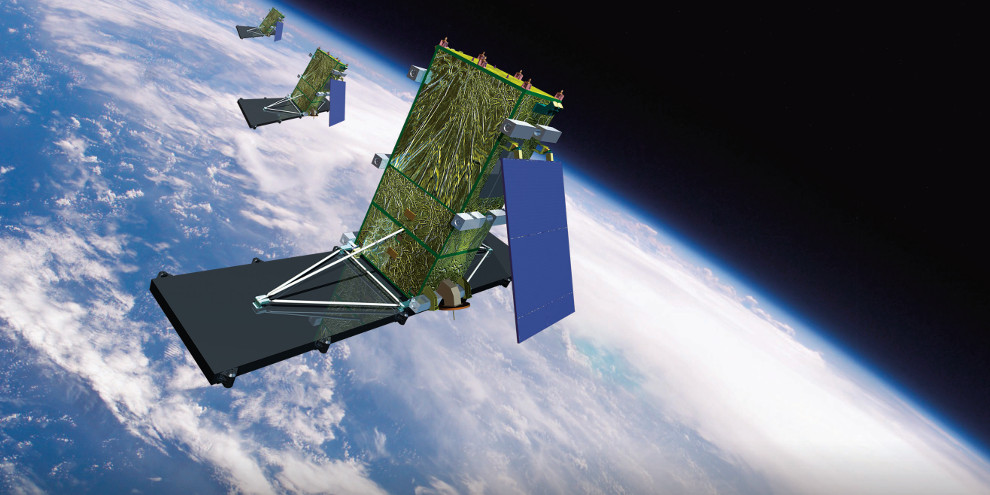Space Canada’s Spacebound 2023 industry conference began with a bang on October 18, 2023, when François-Philippe Champagne, Minister of Innovation, Science and Industry and Minister responsible for the Canadian Space Agency, announced $1.012 billion in funding over the next 15 years for the ‘RADARSAT+ portfolio.’
This portfolio includes a project to design, build and launch a replacement satellite for the RADARSAT Constellation Mission (RCM) trio of satellites currently in service, plus a project to start defining a fourth-generation national satellite system to succeed the RCM. The RADARSAT+ portfolio also entails bartering arrangements with international partners, purchase of commercial Earth Observation (EO) data, and the use of freely available EO data from other sources.
The news was greeted by loud applause in the packed conference room at Ottawa’s Canadian Museum of Nature, which is hosting Space Canada’s Spacebound 2023 for the next two days. (Space Canada is the trade association for the Canadian space industry.) Champagne acknowledged that the “applause is not for me, but for the leadership, the expertise and the excellence of all the people that work at the Space Agency of Canada and all of you as part of this sector, because this is Canadian funds that we’re putting in the industry.”

Admittedly, the RADARSAT+ portfolio project is a recognition that the RCM is approaching end-of-life, said Champagne. “But also what I found inspiring — and I hope you’re with me in that — is that we’re going to define the fourth generation of (a) sovereign national satellite system to succeed the RADARSAT Constellation,” he said. “Part of this is about replacement, which is much needed to ensure that we have continuity of data. But, as well, it is really (about) leading onto the next generation of satellites, which will maintain and enhance Canada’s Earth Observation capabilities and ensure continued access to satellite imagery over the long term.”
Champagne observed that there has never been a time when EO imagery is more important to Canada, and added that RADARSAT+ project will be a joint effort between the Canadian Space Agency and Canada’s space industry. He also hearkened back to Canada’s long history in space, going back to the launch of the Alouette 1 satellite in 1962.
“Oftentimes I feel that, as a generation, we are taking the dividend of what has been done by people before us,” said Champagne. Referring to the EO potential of RADARSAT+, he added that “hopefully 20, 30 years from now, people will see that (project) as a dividend to them for the next generation.” But whatever happens, investing $1 billion in RADARSAT+ will strengthen our position as a world leader.”
 SpaceQ Space news and analysis.
SpaceQ Space news and analysis.



